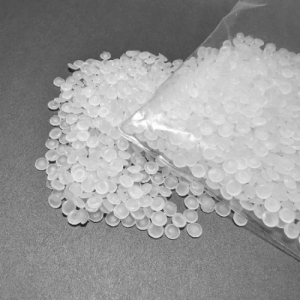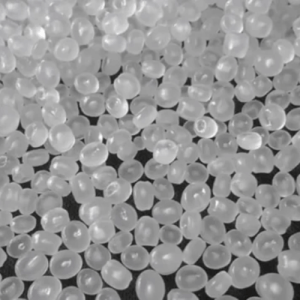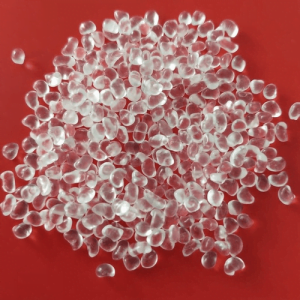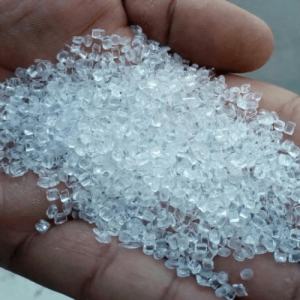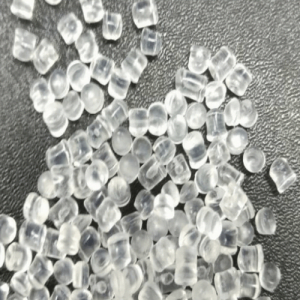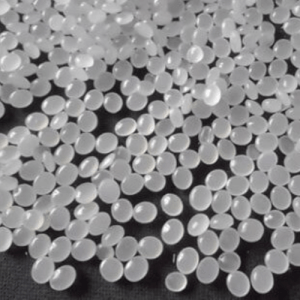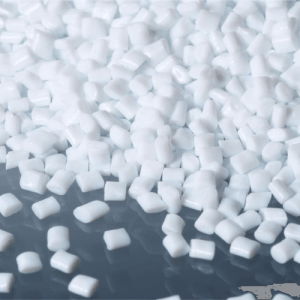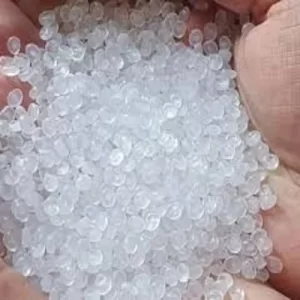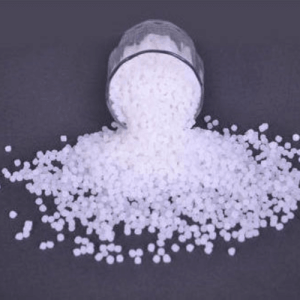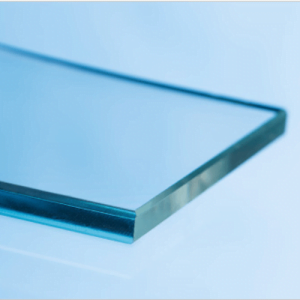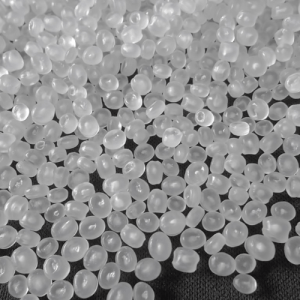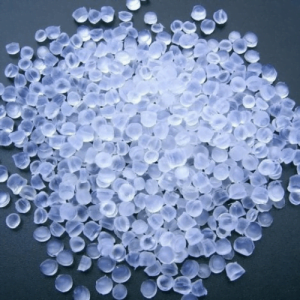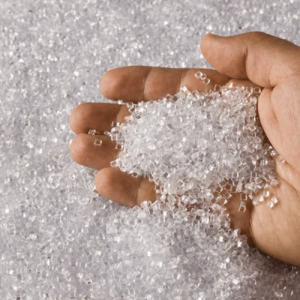-
Ethylene-Propylene Copolymer (EPM):
EPM is a copolymer derived from the polymerization of ethylene and propylene monomers. It is a versatile rubber with good heat resistance, weather resistance, and electrical insulation properties. EPM exhibits excellent resistance to ozone, sunlight, and oxidation, making it suitable for outdoor applications and as a sealing or gasket material in automotive and industrial settings.Ethylene-Propylene-Diene Monomer (EPDM):
EPDM is a terpolymer formed by copolymerizing ethylene, propylene, and a diene monomer, typically containing ethylidene norbornene or dicyclopentadiene. The presence of the diene monomer introduces additional cross-linking sites in the polymer, enhancing its properties further. EPDM rubber is known for its exceptional resistance to weathering, UV radiation, ozone, and a wide range of chemicals. It has a broader operating temperature range than EPM and is commonly used in automotive parts, roofing materials, gaskets, seals, and electrical insulation. -
Short Information:
- Ethylene-Vinyl Acetate (EVA) is a copolymer produced by combining ethylene and vinyl acetate monomers through a polymerization process.
- The amount of vinyl acetate in the copolymer can vary, which allows for a broad range of EVA grades with different properties.
- EVA is known for its flexibility, elasticity, and softness, making it rubber-like and ideal for various cushioning and padding applications.
- It exhibits good transparency and excellent adhesion to many substrates, making it useful for applications like films, laminates, and adhesives.
- EVA is resistant to UV radiation, weathering, and chemicals, making it suitable for outdoor applications and as a component in some types of solar panels.
- It is commonly used in industries such as footwear, sports equipment, packaging, foam products, and photovoltaic modules (solar panels).
-
Short Information:
- Ethylene-Vinyl Alcohol (EVOH) is a thermoplastic copolymer formed by combining ethylene and vinyl alcohol monomers through a polymerization process.
- Its unique structure imparts excellent barrier properties against gases like oxygen, nitrogen, and carbon dioxide, as well as aromatic compounds, making it suitable for oxygen-sensitive food packaging.
- EVOH is transparent, with a glassy appearance, allowing consumers to see the packaged contents clearly.
- It is commonly used as a functional layer in multilayer plastic films and coatings to provide gas and moisture barrier properties.
- EVOH is widely used in the food industry for packaging perishable products, as it helps extend shelf life and preserve freshness.
- Additionally, EVOH finds applications in fuel tanks for vehicles, where its barrier properties prevent the diffusion of fuel vapors.
-
Short Information:
- Poly(1-butene) (PB-1) is a thermoplastic polymer formed by polymerizing butene, a hydrocarbon with four carbon atoms, using a catalyst.
- It is a semi-crystalline material, combining the characteristics of both crystalline and amorphous polymers.
- PB-1 exhibits excellent transparency, making it an ideal choice for applications where optical clarity is crucial.
- It also offers high resistance to impact, chemicals, and UV radiation, making it suitable for outdoor and demanding environments.
- PB-1 is often used in the production of films, particularly for food packaging, due to its excellent barrier properties and resistance to permeation.
Additionally, it finds applications in pipes, tubes, and various molded parts that require a balance of mechanical properties and processability.
-
Short Description:
- Poly(4-methyl-1-pentene) (PMP) is a high-performance thermoplastic polymer formed by polymerizing 4-methyl-1-pentene monomers.
- It is a transparent, lightweight material with excellent heat resistance, chemical resistance, and electrical insulating properties.
- PMP is known for its low density, which contributes to its lightweight nature and high strength-to-weight ratio.
- It exhibits good dimensional stability, even at elevated temperatures, making it suitable for applications in harsh environments.
- PMP’s transparency, combined with its excellent electrical insulating properties, makes it valuable in optical and electronic applications.
- It is used in industries such as electronics, optical components, electrical insulation, and packaging, where its specific properties are advantageous.
-
Key characteristics of polybutene include:
- Viscous Liquid or Solid
- High Purity and Low Toxicity
- Excellent Impermeability
- Good Lubricity
- Electrical Insulation
-
Here are some key characteristics and uses of Polyethylene:
- Versatility: PE is known for its flexibility and toughness, making it suitable for a wide range of applications.
- Water resistance: PE is highly resistant to moisture, making it an excellent material for containers and packaging.
- Chemical resistance: It exhibits resistance to many chemicals, acids, and bases, which adds to its usefulness in various industrial applications.
- Lightweight: PE is relatively lightweight, making it suitable for products where weight is a concern.
- Excellent insulator: PE has low electrical conductivity, making it an effective electrical insulator.
- Recyclable: It is a recyclable material, contributing to its popularity in eco-friendly initiatives.
Derivatives:
- Low-Density Polyethylene (LDPE)
- Linear Low-Density Polyethylene (LLDPE)
- High-Density Polyethylene (HDPE)
- Ultra-High-Molecular-Weight Polyethylene (UHMWPE)
-
Short Information:
- Polyethylene terephthalate (PET) is a thermoplastic polymer formed by polymerizing ethylene glycol and terephthalic acid.
- It is a clear, lightweight, and strong material with good mechanical and barrier properties, making it ideal for various packaging applications.
- PET is commonly used to produce bottles for beverages, food containers, and other single-use and reusable packaging items.
- It is known for its recyclability, and the recycling process can yield a variety of products, including fibers for clothing (known as PET or polyester fibers).
- In addition to packaging, PET is used in engineering applications, electrical insulators, films, and other consumer products due to its excellent combination of properties.
- PET has low toxicity and is considered safe for many food and beverage applications.
-
Short Information:
- Polyethyleneimine (PEI) is a linear polymer composed of repeating units of ethyleneimine monomers.
- It possesses strong cationic properties, meaning it carries a positive charge when dissolved in water or other polar solvents.
- PEI is commonly used as a versatile adhesive in various applications, including bonding metals, plastics, and other materials.
- It finds applications in the production of paper, textiles, and as a wet-strength additive due to its adhesion and reactivity characteristics.
- PEI is also utilized in the field of biotechnology and biomedical research as a DNA and RNA transfection reagent.
- It serves as a crosslinking agent in certain resins and coatings, contributing to enhanced mechanical properties.
-
Abbreviation: PIB
Polyisobutylene (PIB) is a long-chain hydrocarbon polymer derived from the polymerization of isobutylene, possessing high molecular weight and exhibiting characteristics of a rubbery material. It is used in applications such as sealants, adhesives, lubricants, and as a base material for manufacturing butyl rubber, due to its excellent impermeability to gases and moisture, as well as its resistance to chemicals and temperature extremes.
-
Abbreviation: PMP
Polymethylpentene (PMP) is a high-performance thermoplastic polymer formed by polymerizing methylpentene monomers. It is a transparent, lightweight material with excellent heat resistance, chemical resistance, and electrical insulating properties. PMP finds applications in various industries, including laboratory equipment, optical components, electrical insulators, and packaging, where its specific properties are advantageous. Due to its relatively high cost compared to other plastics, PMP is mainly used in situations where its unique characteristics are essential for meeting specific performance requirements.
-
Key characteristics of polypropylene include:
- High Strength and Durability
- Chemical Resistance
- Low Density
- Thermal Stability
- Versatility
Derivatives:
- Isotactic Polypropylene (i-PP)
- Syndiotactic Polypropylene (s-PP)
- Atactic Polypropylene (a-PP)
-
Short Information:
- Polypropylene oxide (PPO or PPOx) is a polyether formed by the polymerization of propylene oxide monomers.
- It is a flexible and amorphous material with good hydrolytic stability and resistance to solvents, making it useful in certain chemical environments.
- PPO exhibits excellent water absorption and can be used in applications requiring high water content and water-retaining properties.
- It is used as a surfactant, emulsifier, and stabilizer in personal care products, pharmaceuticals, and various industrial processes.
- PPO is also employed as a starting material for the production of other polymers and as a component in polyurethane foams.
-
Abbreviation: PVC
Polyvinyl Chloride, commonly known as PVC, is a versatile and widely used synthetic plastic resin. It is derived from the polymerization of vinyl chloride monomers. PVC’s exceptional properties, including durability, chemical resistance, and affordability, make it a preferred choice in various applications. It is used extensively in construction for pipes, fittings, and profiles due to its ability to withstand diverse environmental conditions. Additionally, PVC is used in manufacturing vinyl flooring, window frames, cables, and a wide range of consumer products. While its widespread usage offers numerous benefits, concerns about environmental impact and recycling have led to increased efforts to develop more sustainable alternatives and recycling methods for PVC.


